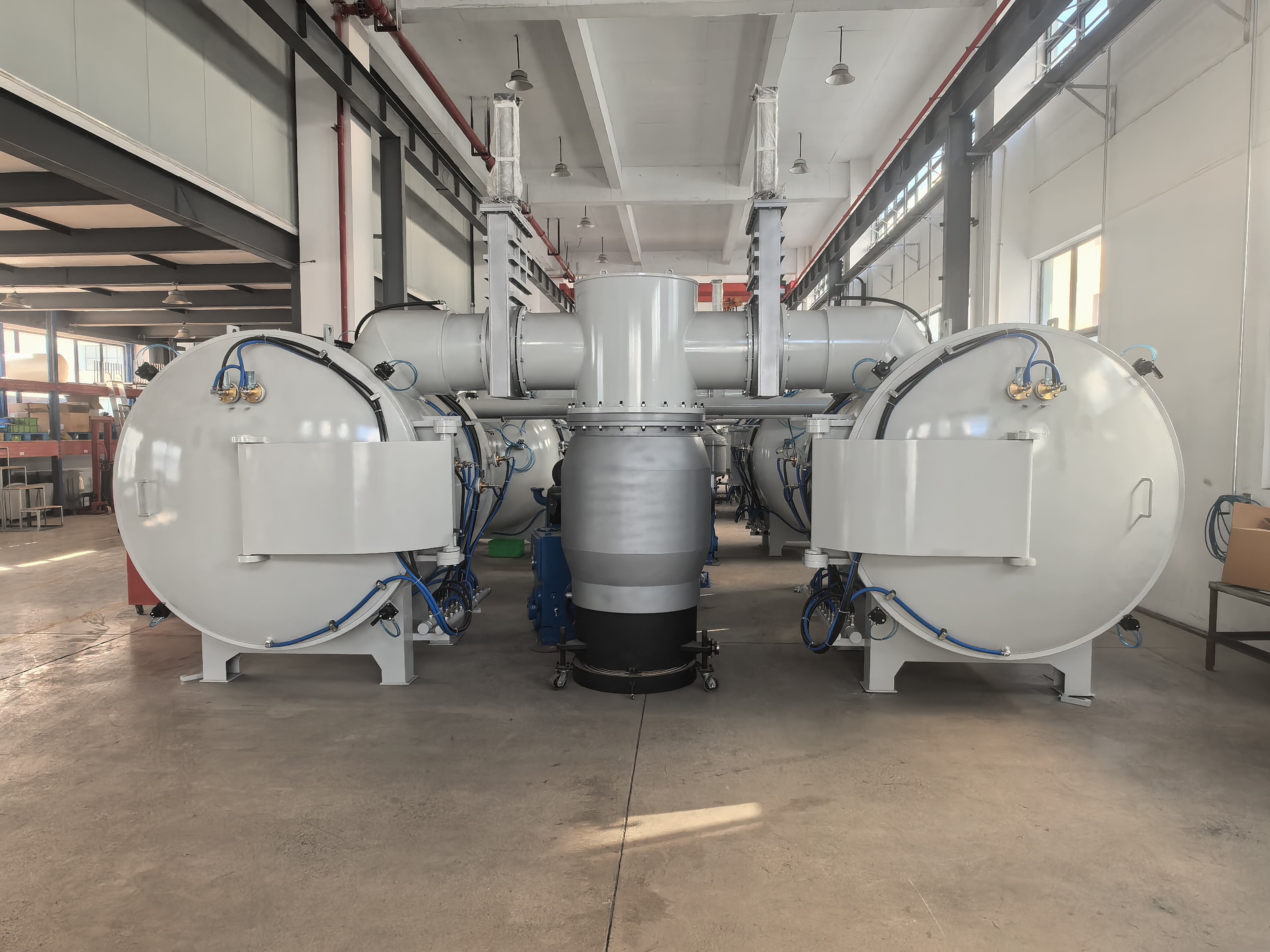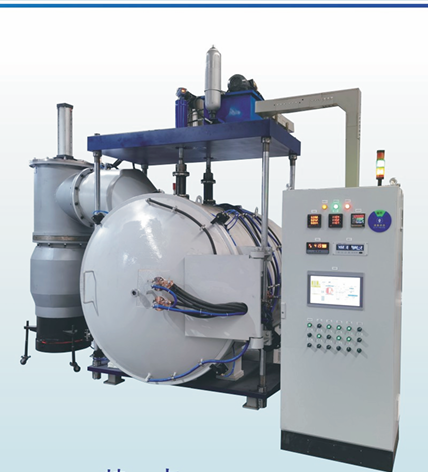Understanding Industrial Metal Melting Technologies
The world of metallurgy revolves around the critical process of melting metals, and selecting the right melting furnaces plays a pivotal role in achieving optimal results. From precious metals to industrial alloys, each material demands specific conditions and equipment for successful processing. Modern melting furnaces combine technological innovation with precise temperature control, offering manufacturers the capability to handle diverse metallic materials efficiently and safely.
The evolution of melting furnaces has transformed the metal processing industry, enabling unprecedented levels of precision and productivity. These sophisticated systems accommodate various operational requirements, from small-batch precious metal work to large-scale industrial production. Understanding the compatibility between different furnace types and specific metals is essential for achieving optimal results while maintaining cost-effectiveness and energy efficiency.
Primary Categories of Industrial Melting Furnaces
Induction Melting Furnaces
Induction melting furnaces represent the pinnacle of modern metal processing technology. These systems utilize electromagnetic fields to generate heat directly within the metal, offering superior temperature control and energy efficiency. They excel at melting ferrous metals like steel and iron, making them indispensable in foundries and steel mills.
The precise control offered by induction melting furnaces allows operators to maintain specific temperatures with minimal variation, crucial for producing high-quality metal products. These furnaces also provide a clean melting environment, reducing contamination risks and improving the final product quality. Their rapid heating capability and reduced energy consumption make them increasingly popular in contemporary metalworking operations.
Electric Arc Furnaces
Electric arc furnaces stand out for their ability to handle large volumes of metal, particularly in steel production. These melting furnaces operate by creating an electric arc between electrodes and the metal charge, generating intense heat that efficiently melts the material. Their robust design allows for processing of both pure metals and scrap materials, contributing to sustainable manufacturing practices.
The versatility of electric arc furnaces extends to their ability to process various grades of steel and iron alloys. They offer excellent temperature control and can achieve the high temperatures necessary for melting refractory metals. Modern electric arc furnaces incorporate advanced automation systems, enhancing operational efficiency and worker safety.
Specialized Furnaces for Precious Metals
Crucible Furnaces
Crucible melting furnaces excel in processing precious metals and non-ferrous alloys. These systems utilize a container (crucible) made from high-temperature resistant materials to hold the metal during melting. Their design allows for precise temperature control and minimal metal loss, making them ideal for valuable materials like gold, silver, and platinum.
The controlled environment of crucible melting furnaces helps maintain metal purity and prevents contamination. These furnaces come in various sizes, from small units suitable for jewelry making to larger systems for industrial applications. Their operational flexibility and reliable performance make them a preferred choice for precious metal processing.
Resistance Furnaces
Resistance melting furnaces offer exceptional precision for processing temperature-sensitive metals. These systems generate heat through electrical resistance elements, providing uniform heating and excellent temperature stability. They are particularly effective for melting aluminum, copper, and their alloys, where precise temperature control is crucial.
The design of resistance furnaces prioritizes energy efficiency and precise temperature distribution. These qualities make them ideal for applications requiring consistent metal quality and repeatable results. Modern resistance furnaces often incorporate advanced controls and monitoring systems, ensuring optimal performance and product quality.
Advanced Solutions for Special Applications
Vacuum Melting Furnaces
Vacuum melting furnaces represent the cutting edge of metal processing technology. These sophisticated systems operate in a controlled environment, eliminating atmospheric contamination and enabling the production of high-purity metals and alloys. They are essential for processing reactive metals like titanium and specialized aerospace alloys.
The vacuum environment prevents oxidation and allows for precise control over metal composition. These melting furnaces support both small-scale research applications and industrial production, offering unparalleled quality control and material consistency. Their ability to maintain metal purity makes them invaluable in industries requiring exceptional material properties.
Plasma Arc Furnaces
Plasma arc melting furnaces utilize ionized gas to generate extremely high temperatures, making them suitable for processing refractory metals and specialized alloys. These systems excel at melting materials with high melting points and can achieve temperatures beyond the capabilities of conventional furnaces.
The unique heating mechanism of plasma arc furnaces allows for rapid melting while maintaining precise control over the process. They find extensive application in producing high-performance materials for aerospace, defense, and advanced manufacturing sectors. The technology continues to evolve, offering improved efficiency and broader application possibilities.
Environmental Considerations and Future Trends
Sustainable Melting Technologies
Modern melting furnaces increasingly incorporate eco-friendly features and energy-efficient designs. Manufacturers focus on reducing emissions and improving energy utilization through advanced control systems and improved insulation. The integration of renewable energy sources and heat recovery systems further enhances the environmental sustainability of metal processing operations.
Innovation in furnace design continues to drive improvements in energy efficiency and environmental performance. New technologies enable better resource utilization and reduced waste generation, aligning with global sustainability goals. The industry's commitment to environmental stewardship influences the development of next-generation melting furnaces.

Smart Technology Integration
The future of melting furnaces lies in smart technology integration and Industry 4.0 principles. Advanced sensors, automation systems, and data analytics enable precise process control and predictive maintenance. These capabilities enhance operational efficiency while reducing downtime and maintenance costs.
Digital transformation in furnace technology facilitates remote monitoring and control, improving safety and productivity. The integration of artificial intelligence and machine learning algorithms optimizes melting processes, ensuring consistent quality and reduced energy consumption. These advancements position modern melting furnaces at the forefront of industrial innovation.
Frequently Asked Questions
What factors should be considered when selecting a melting furnace?
Key considerations include the type of metal to be processed, required temperature range, production volume, energy efficiency, and environmental regulations. Additional factors involve space constraints, maintenance requirements, and total operational costs. Consulting with furnace manufacturers helps ensure optimal equipment selection for specific applications.
How do energy efficiency ratings compare among different furnace types?
Induction furnaces typically offer the highest energy efficiency, converting up to 90% of input power into useful heat. Electric arc furnaces provide moderate efficiency, while resistance furnaces vary based on design and application. Modern furnaces incorporate energy-saving features like improved insulation and heat recovery systems to optimize efficiency.
What maintenance practices ensure optimal furnace performance?
Regular maintenance includes inspecting refractory materials, checking electrical connections, cleaning monitoring sensors, and calibrating control systems. Implementing preventive maintenance schedules, monitoring wear patterns, and addressing issues promptly helps maximize equipment lifespan and operational efficiency. Training operators in proper maintenance procedures is essential for optimal performance.


